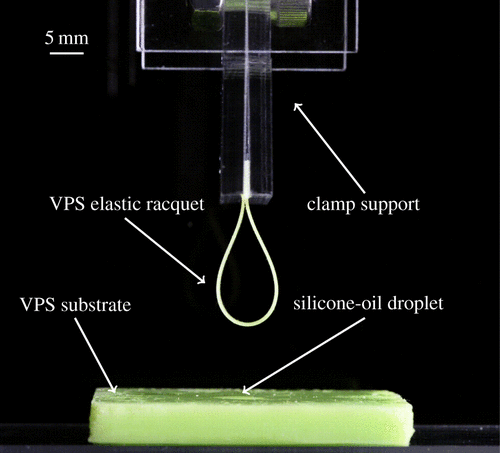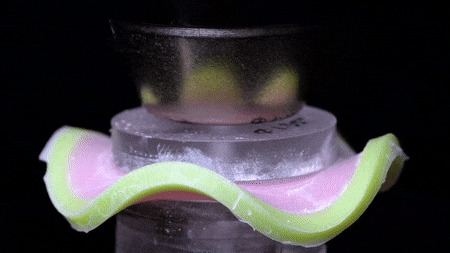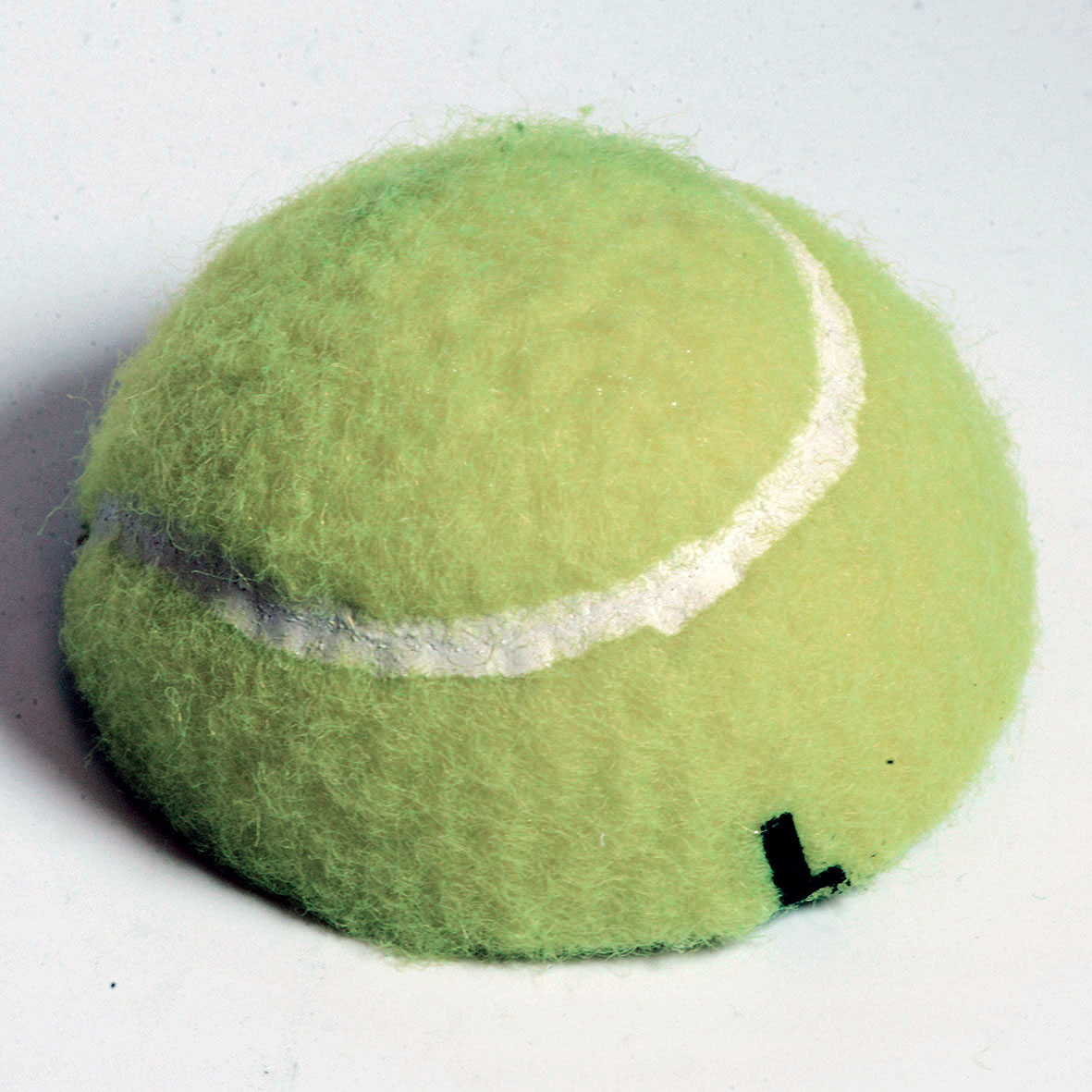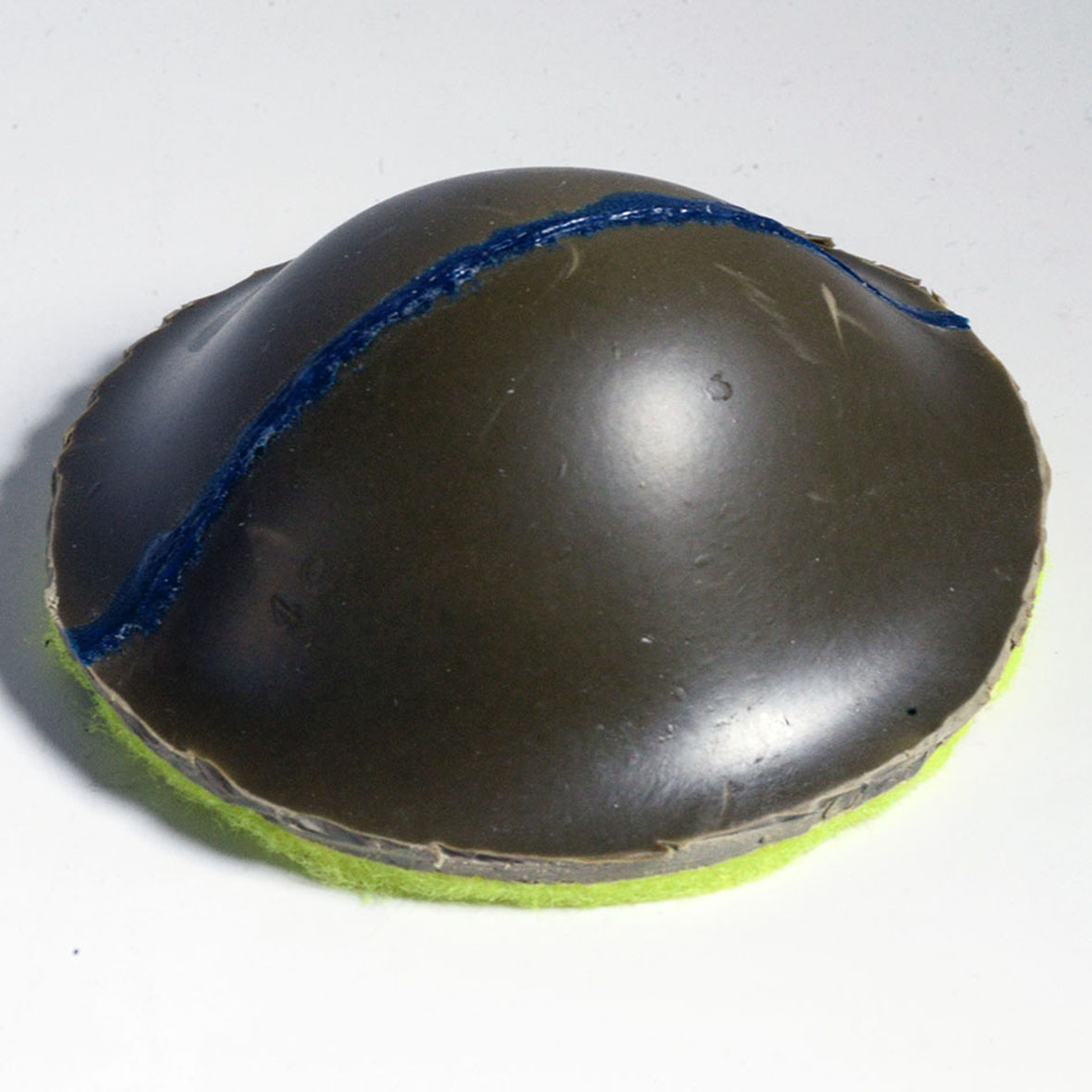Prof. Holmes promoted to Associate Professor
Douglas Holmes, ENG, Mechanical Engineering and Materials Science & Engineering, investigates the mechanics, physics, and geometry of slender structures (typically comprising rods, plates, and shells), working to harness material and structural instability for advanced functionality. A past NSF CAREER Award recipient, he is supported by major grants through the NSF and Department of Defense and has published a book chapter and dozens of articles in leading engineering and physics journals. He has been promoted to Associate Professor, with tenure.
Paper: Swelling effects on the adhesion
Swelling effects on localized adhesion of an elastic ribbon
M. Curatolo , P. Nardinocchi , L. Teresi and D.P. Holmes
Proceedings of the Royal Society A, 475(2225), 0067, (2019)
Abstract: We investigate the adhesion mechanism between an elastic strip of vinylpolysiloxane bent in a racquet-like shape, and a thick elastomeric substrate with the aim to understand how local swelling modifies adhesion. Using a modified loop–tack adhesion test, we place a droplet of silicone oil in between the two materials, vary the dwell time and measure the force required to separate the two interfaces. The experiments are then compared with an analytical model that describes how the critical peel force is modified as the interfacial surface energy changes over time. Our study reveals that in certain circumstances swelling can enhance adhesion. More specifically, strong adhesion is obtained when most of the droplet is absorbed by the solid. By contrast, when the droplet remains at the interface a small adhesive force is measured.
Link: https://royalsocietypublishing.org/doi/10.1098/rspa.2019.0067

Review Paper: Elasticity and Stability of Shape-Shifting Structures
Elasticity and Stability of Shape-Shifting Structures
Douglas P. Holmes
Current Opinion in Colloid and Interface Science, 40:118-137, (2019).
Abstract: As we enter the age of designer matter — where objects can morph and change shape on command — what tools do we need to create shape-shifting structures? At the heart of an elastic deformation is the combination of dilation and distortion or stretching and bending. The competition between the latter can cause elastic instabilities, and over the last fifteen years, these instabilities have provided a multitude of ways to prescribe and control shape change. Buckling, wrinkling, folding, creasing, and snapping have become mechanisms that when harmoniously combined enable mechanical metamaterials, self-folding origami, ultralight and ultrathin kirigami, and structures that appear to grow from one shape to another. In this review, I aim to connect the fundamentals of elastic instabilities to the advanced functionality currently found within mechanical metamaterials.
Link: https://www.sciencedirect.com/science/article/pii/S1359029418300839?dgcid=author
Xin Jiang Defends his Ph.D!
Congratulations to Dr. Xin Jiang for successfully defending his Ph.D. thesis entitled "Stability of Highly Nonlinear Structures: Snapping Shells and Elastogranular Columns" !
Paper: Buckling of geometrically confined shells
Buckling of geometrically confined shells
Lucia Stein-Montalvo, Paul Costa, Matteo Pezzulla and Douglas P. Holmes
Soft Matter, 15(6), 1215-1222, (2019).
Abstract: We study the periodic buckling patterns that emerge when elastic shells are subjected to geometric confinement. Residual swelling provides access to range of shapes (saddles, rolled sheets, cylinders, and spherical sections) which vary in their extrinsic and intrinsic curvatures. Our experimental and numerical data show that when these moderately thick structures are radially confined, a single geometric parameter – the ratio of the total shell radius to the amount of unconstrained material – predicts the number of lobes formed. We present a model that interprets this scaling as the competition between radial and circumferential bending. Next, we show that reducing the transverse confinement of saddles causes the lobe number to decrease with a similar scaling analysis. Hence, one geometric parameter captures the wave number through a wide range of radial and transverse confinement, connecting the shell shape to the shape of the boundary that confines it. We expect these results to be relevant for an expanse of shell shapes, and thus applicable to the design of shape-shifting materials and the swelling and growth of soft structures.
Link: https://pubs.rsc.org/en/content/articlepdf/2019/sm/c8sm02035c

Paper: Multistable Kirigami
Multistable kirigami for tunable architected materials
Yi Yang, Marcelo A. Dias, and Douglas P. Holmes
Physical Review Materials, 2, 110601(R)
Abstract: In nature, materials such as ferroelastics and multiferroics can switch their microstructure in response to external stimuli, and this reconfiguration causes a simultaneous modulation of their material properties. Rapid prototyping technologies have enabled origami and kirigami-inspired architected materials to provide a means for designing shape-shifting structures, and here we show how multistable structures inspired by kirigami provide novel design criteria for preparing mechanical metamaterials with tunable properties. By changing the geometry of kirigami unit cells, we obtain multistable kirigami lattice structures endowed with a bistable snap-through mechanism. We demonstrate the precise control of material stiffness, along with the ability to tune this property in situ by locally and reversibly switching the unit cell configurations. We anticipate these mechanical metamaterials will provide a platform to achieve in situ tunable electrical, optical, and mechanical properties for a variety of applications in multifunctional materials, two-dimensional materials, and soft robotics.
Link: https://journals.aps.org/prmaterials/abstract/10.1103/PhysRevMaterials.2.110601
Paper: Snapping of bistable, prestressed cylindrical shells
Snapping of bistable, prestressed cylindrical shells
Xin Jiang, Matteo Pezzulla, Huiqi Shao, Tushar K. Ghosh, and Douglas P. Holmes,
Europhysics Letters (EPL), 122, 6, (2018).
Bistable shells can reversibly change between two stable configurations with very little energetic input. Understanding what governs the shape and snap-through criteria of these structures is crucial for designing devices that utilize instability for functionality. Bistable cylindrical shells fabricated by stretching and bonding multiple layers of elastic plates will contain residual stress that will impact the shell's shape and the magnitude of stimulus necessary to induce snapping. Using the framework of incompatible elasticity, we first predict the mean curvature of a nearly cylindrical shell formed by arbitrarily prestretching one layer of a bilayer plate with respect to another. Then, beginning with a residually stressed cylinder, we determine the amount of the stimuli needed to trigger the snapping between two configurations through a combination of numerical simulations and theory. We demonstrate the role of prestress on the snap-through criteria, and highlight the important role that the Gaussian curvature in the boundary layer of the shell plays in dictating shell stability.
Link: http://iopscience.iop.org/article/10.1209/0295-5075/122/64003
Paper: Bioinspired Electrically Activated Soft Bistable Actuators
Bioinspired Electrically Activated Soft Bistable Actuators
Huiqi Shao, Shuzhen Wei, Xin Jiang, Douglas P. Holmes, and Tushar K. Ghosh
Advanced Functional Materials, 18029999, (2018).
Movement and morphing in biological systems provide insights into the materials and mechanisms that may enable the development of advanced engineering structures. The nastic motion of plants in response to environmental stimuli, e.g., the rapid closure of the Venus flytrap's leaves, utilizes snap‐through instabilities originating from anisotropic deformation of plant tissues. In contrast, ballistic tongue projection of chameleon is attributed to direct mechanical energy transformation by stretching elastic tissues in advance of rapid projection to achieve higher speed and power output. Here, a bioinspired trilayered bistable all‐polymer laminate containing dielectric elastomers (DEs) is reported, which double as both structural and active materials. It is demonstrated that the prestress and laminating strategy induces tunable bistability, while the electromechanical response of the DE film enables reversible shape transition and morphing. Electrical actuation of bistable structures obviates the need for continuous application of electric field to sustain their transformed state. The experimental results are qualitatively consistent with our theoretical analyses of prestrain‐dependent shape and bistability.
Link: https://onlinelibrary.wiley.com/doi/abs/10.1002/adfm.201802999
Paper: Bistable Shells
Static Bistability of Spherical Caps
Matteo Taffetani, Xin Jiang, Douglas P. Holmes, and Dominic Vella
Proceedings of the Royal Socitey A, 474(2213), (2018).
Depending on its geometry, a spherical shell may exist in one of two stable states without the application of any external force: there are two ‘self-equilibrated’ states, one natural and the other inside out (or ‘everted’). Though this is familiar from everyday life—an umbrella is remarkably stable, yet a contact lens can be easily turned inside out the precise shell geometries for which bistability is possible are not known. Here, we use experiments and finite-element simulations to determine the threshold between bistability and monostability for shells of different solid angle. We compare these results with the prediction from shallow shell theory, showing that, when appropriately modified, this offers a very good account of bistability even for relatively deep shells. We then investigate the robustness of this bistability against pointwise indentation. We find that indentation provides a continuous route for transition between the two states for shells whose geometry makes them close to the threshold. However, for thinner shells, indentation leads to asymmetrical buckling before snap-through, while also making these shells more ‘robust’ to snap-through. Our work sheds new light on the robustness of the ‘mirror buckling’ symmetry of spherical shell caps.
Link: http://rspa.royalsocietypublishing.org/content/474/2213/20170910


Softbites: Elastogranularity & Root Growth
The soft matter blog "Softbites" recently highlighted our work on elastogranularity. The blog post was written by Adam Fortais, and nicely highlights the connection between elastogranular interactions and root growth.
Blog post: https://softbites.org/2018/05/23/elastogranularity-and-how-soil-may-shape-the-roots-of-plants/
Longform version: https://artscicstra.wordpress.com/2018/05/16/elastogranularity-and-how-soil-shapes-the-roots-of-plants-continued/



